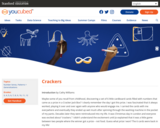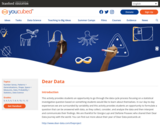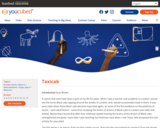
In this task, students explore a growing pattern of circles.
- Subject:
- Mathematics
- Material Type:
- Activity/Lab
- Lesson
- Teaching/Learning Strategy
- Provider:
- Stanford Graduate School of Education
- Provider Set:
- YouCubed
- Date Added:
- 04/26/2022

This collection contains highly recommended Secondary Mathematics I lessons, activities, and other resources from the eMedia library.

In this task, students explore a growing pattern of circles.

Maybe some of you recall from childhood, discovering a set of 6 little cardboard cards filled with numbers that came as a prize in a Cracker Jack Box? I clearly remember the day I got this prize. I was fascinated that it always worked, playing it over and over again with anyone who would engage me. I carried the cards with me everywhere and eventually they ended up wet mush after spinning through the washing machine in the pocket of my pants. Decades later they were reintroduced into my life. It was Christmas day in London and everyone was excited about Òcrackers.Ó I didnÕt understand the excitement until Jo explained that it was a little game between two people where the winner got a prize Ð not food. Guess what prize I won? The 6 cards were back in my life!

This activity provides students an opportunity to go through the data cycle process focusing on a statistical investigative question based on something students would like to learn about themselves. In our day-to-day experiences we are surrounded by variability and this activity provides students an opportunity to formulate a question that can be answered with data, as they collect, consider, and analyze the data and then interpret and communicate their findings. We are thankful for Giorgia Lupi and Stefanie Posavec who shared their Dear Data journey with the world.

At youcubed we are so excited to share this activity derived from a problem in Core-Plus Mathematics, Course 1. The problem included here is from Unit 3, Linear Functions, where students explore a small sample data set from the World Health Organization, Global Health Observatory Data Repository, faostat3.fao.org. We love the use of real data as students work, in this case, with linear functions and data.

It seems that taxis have been a part of my life for years. When I was a teacher and academic in London I would see the iconic Black cabs zipping around the streets of London, and I would occasionally travel in them. It was years later when these Black cabs became important again, as some of the first evidence on the plasticity of brains Ð even adult brains Ð came from studying the brains of drivers of Black cabs in London (see video link below). Researchers found that after their intensive spatial training the brains of the drivers of Black cabs strengthened and grew. Years later I was teaching my freshman class when I met Tessa, who proposed this taxi activity for youcubed.